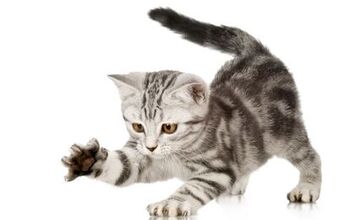Scientists Reveal Why Cats Scratch Furniture and How to Stop It

Many cat owners get used to seeing torn cushions, carpets, and furniture that bear their felines’ claw marks. Scratching is normal behavior for cats but is often considered a behavioral problem by cat owners who sometimes turn to painful procedures, like declawing, as a quick fix.
This has prompted an international team of researchers to investigate which factors influence undesired scratching behavior in domestic cats. The team surveyed over 1,200 cat owners in France about the daily lives and characteristics, as well as undesired scratching behavior of their cats. Their findings were published in Frontiers in Veterinary Science.
“Here we show that certain factors - such as the presence of children at home, personality traits of cats and their activity levels -significantly impact the extent of scratching behavior,” explained Dr. Yasemin Salgirli Demirbas, the first author of the study and a veterinary researcher at Ankara University.
“Our findings can help caregivers manage and redirect scratching to appropriate materials, which could help foster a more harmonious living environment for both cats and their caregivers.”
Researchers discovered a link between certain behavioral and environmental factors and increased scratching behavior in cats. “Specifically, the presence of children in the home as well as high levels of play and nocturnal activity significantly contribute to increased scratching,” explained Salgirli Demirbas.
Nocturnal activity in cats consists of behaviors exhibited at night. Heightened vocalization and playfulness during the night are usually the result of poor daytime stimulation or lack of social interactions. But it may also be a cat’s way of seeking attention.
“While cats are naturally nocturnal, they can adjust to a human diurnal schedule if provided with structured and engaging activities during the day,” said the survey’s lead author.
However, researchers found that stress is the main reason behind increased scratching.
For example, the presence of children in the home, especially while they’re small, might increase stress levels and be one of several factors that can cause cats to scratch.
Although it may seem unlikely, playfulness is another factor that can be associated with stress. You see, when cats play for a long time without a break, their stress levels can become high because of uninterrupted stimulation.
Unsurprisingly, researchers discovered that cats described as aggressive and troublesome also exhibited higher levels of unwanted scratching.
Although some factors that contribute to unwanted scratching - such as the cat’s personality and the presence of young children at home - can’t be changed, others can. For example, placing scratching posts in areas a cat spends a lot of time in or near their favorite resting spot can lessen the cat’s urge to scratch the furniture.
Using pheromone diffusers and sprays is also an effective way to help your cat feel calm and confident in their environment. Pheromone therapy is often used for cats that show signs of anxiety and can prevent stress behaviors like scratching, crying, and hiding.
“Providing safe hiding places, elevated observation spots, and ample play opportunities can also help alleviate stress and engage the cat in more constructive activities,” explained researchers.
Engaging a cat in multiple play sessions that mimic hunting behavior is a great strategy to reduce stress and excessive scratching. This type of play will keep the cat mentally stimulated and help deepen the bond between the owner and the cat.
“Understanding the underlying emotional motivations of scratching behavior, such as frustration, which seem to be linked to personality traits and environmental factors, allows the caregivers to address these issues directly.”
Join the PetGuide community. Get the latest pet news and product recommendations by subscribing to our newsletter here.

Nevena is a freelance writer and a proud mom of Teo, a 17-year-old poodle, and Bob, a rescued grey tabby cat. Since childhood, she had a habit of picking up strays and bringing them home (luckily, her parents didn't know how to say NO). When she's not writing for her fellow pet parents, Nevena can be found watching Teo sleep. To her defense, that's not as creepy as it sounds!
More by Nevena Nacic























